The attached images show the device, that is in question. No sticker on rear and no naming on the front regarding the model (only the brand name is to read on front).
The amplifier was purchased between 1981 and 1983 in brandnew condition. On rear panel is to find only a white sticker with the number 8646 - the serial number - so I think (in the same kind as to see on the forth and fifth image from attachment, but without the blue stickers).
Maybe with help of the serial-No 8646 (which is also to find on a second sticker on the bottom plate) and the year of purchase in not used condition it is possible to say from any member, what is the associated model naming. Thank you very much in advance.
As you can see on the images from follow URLs there are five different models without model naming on the front and rear panel. Only later manufactured power amp devices from the models "AW-65" and "AW-100" show the model naming below the brand name on the front panel and from AW-II and AW-IIa on the rear panel.
URLs from AW-1
https://www.ricardo.ch/de/a/xxx-rare-electrocompaniet-'ampliwire'-1138733358/
https://megazakaz.com/ebay/product/154520059918
URLs from AW-II
https://www.diyaudio.com/community/threads/fs-electrocompaniet-amp-preamp.386118/
https://sorscha.org/Content/html/Specials/AW-II-html/html/AW-II.html
https://www.aussieaudiomart.com/det...-ampliwire-ii-power-amplifier/images/1396055/
https://www.ukaudiomart.com/details...-ampliwire-ii-power-amplifier/images/1396051/
https://www.dba.dk/effektforstaerker/id-1104299504/
URLs from AW-IIa
http://www.audiotecnico.it/riparazi...liwire_IIa/Electrocompaniet_Ampliwire_IIa.htm
https://www.audiocircle.com/index.php?topic=185472.0
URLs from AW-65
https://www.classicaudio.fi/product/electrocompaniet-aw65-ec-1-paate-ja-etuvahvistin/
https://www.hifiengine.com/manual_library/electrocompaniet/aw-65.shtml
https://www.usaudiomart.com/details...paniet-ampliwire-65-amplifier/images/2818978/
URLs from AW-100
https://allegrolokalnie.pl/oferta/electrocompaniet-aw-100
https://www.kleinanzeigen.de/s-anze...MI7qHhmvbigwMV5pSDBx03Zg9-EAQYASABEgLCCPD_BwE
The amplifier was purchased between 1981 and 1983 in brandnew condition. On rear panel is to find only a white sticker with the number 8646 - the serial number - so I think (in the same kind as to see on the forth and fifth image from attachment, but without the blue stickers).
Maybe with help of the serial-No 8646 (which is also to find on a second sticker on the bottom plate) and the year of purchase in not used condition it is possible to say from any member, what is the associated model naming. Thank you very much in advance.
As you can see on the images from follow URLs there are five different models without model naming on the front and rear panel. Only later manufactured power amp devices from the models "AW-65" and "AW-100" show the model naming below the brand name on the front panel and from AW-II and AW-IIa on the rear panel.
URLs from AW-1
https://www.ricardo.ch/de/a/xxx-rare-electrocompaniet-'ampliwire'-1138733358/
https://megazakaz.com/ebay/product/154520059918
URLs from AW-II
https://www.diyaudio.com/community/threads/fs-electrocompaniet-amp-preamp.386118/
https://sorscha.org/Content/html/Specials/AW-II-html/html/AW-II.html
https://www.aussieaudiomart.com/det...-ampliwire-ii-power-amplifier/images/1396055/
https://www.ukaudiomart.com/details...-ampliwire-ii-power-amplifier/images/1396051/
https://www.dba.dk/effektforstaerker/id-1104299504/
URLs from AW-IIa
http://www.audiotecnico.it/riparazi...liwire_IIa/Electrocompaniet_Ampliwire_IIa.htm
https://www.audiocircle.com/index.php?topic=185472.0
URLs from AW-65
https://www.classicaudio.fi/product/electrocompaniet-aw65-ec-1-paate-ja-etuvahvistin/
https://www.hifiengine.com/manual_library/electrocompaniet/aw-65.shtml
https://www.usaudiomart.com/details...paniet-ampliwire-65-amplifier/images/2818978/
URLs from AW-100
https://allegrolokalnie.pl/oferta/electrocompaniet-aw-100
https://www.kleinanzeigen.de/s-anze...MI7qHhmvbigwMV5pSDBx03Zg9-EAQYASABEgLCCPD_BwE
Attachments
-
 167b04b5-9a4a-4436-a538-99a5e9ebbcb4.jpg86.9 KB · Views: 506
167b04b5-9a4a-4436-a538-99a5e9ebbcb4.jpg86.9 KB · Views: 506 -
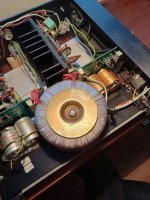 2793efa4-9956-46e3-9381-1cfc805d3749.jpg52.5 KB · Views: 363
2793efa4-9956-46e3-9381-1cfc805d3749.jpg52.5 KB · Views: 363 -
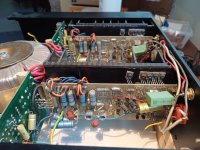 2ca67492-26f6-4795-a9a6-02b7b04cee5e.jpg92 KB · Views: 337
2ca67492-26f6-4795-a9a6-02b7b04cee5e.jpg92 KB · Views: 337 -
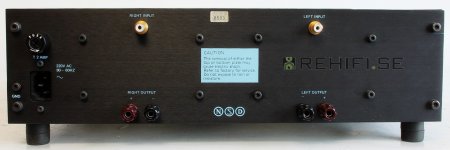 Electrocompaniet-Ampliwire-II-8503.jpg218.2 KB · Views: 342
Electrocompaniet-Ampliwire-II-8503.jpg218.2 KB · Views: 342 -
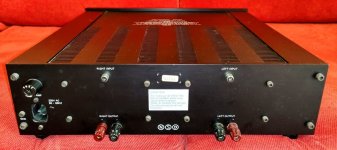 xxx-rare-electrocompaniet-ampliwire I-rear 82242.jpg194.1 KB · Views: 289
xxx-rare-electrocompaniet-ampliwire I-rear 82242.jpg194.1 KB · Views: 289 -
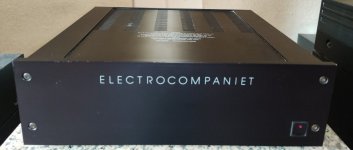 xxx-rare-electrocompaniet-ampliwire I-front.jpg88.6 KB · Views: 301
xxx-rare-electrocompaniet-ampliwire I-front.jpg88.6 KB · Views: 301 -
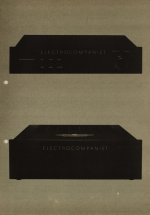 EC AW.1 cover broshure.jpg61.5 KB · Views: 288
EC AW.1 cover broshure.jpg61.5 KB · Views: 288 -
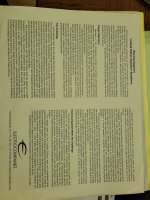 LE Signature Ampliwire.jpg281.6 KB · Views: 319
LE Signature Ampliwire.jpg281.6 KB · Views: 319 -
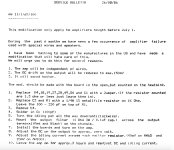 EC Ampliwire II-I-65-100-Service-Bulletin 26.jpg349 KB · Views: 384
EC Ampliwire II-I-65-100-Service-Bulletin 26.jpg349 KB · Views: 384 -
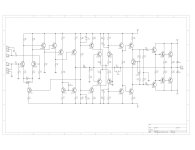 SchÇma Ampliwire II - copie.jpg191 KB · Views: 475
SchÇma Ampliwire II - copie.jpg191 KB · Views: 475
here some images of the model "Ampliwire II" "Ampliwire IIa" and "Ampliwire 100" (last image), which looks inside similar to those from the model in question, but without model naming to read on the device itself
Attachments
-
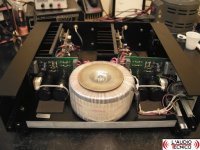 unnamed.jpg56.4 KB · Views: 210
unnamed.jpg56.4 KB · Views: 210 -
 SchÇma Ampliwire II - copie.jpg191 KB · Views: 208
SchÇma Ampliwire II - copie.jpg191 KB · Views: 208 -
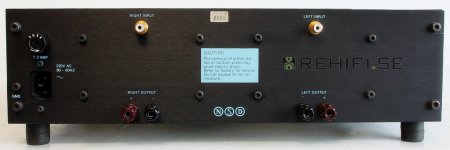 Electrocompaniet-Ampliwire-II-8503.jpg218.2 KB · Views: 189
Electrocompaniet-Ampliwire-II-8503.jpg218.2 KB · Views: 189 -
 Electrocompaniet-Ampliwire-II-42925.jpg257.7 KB · Views: 193
Electrocompaniet-Ampliwire-II-42925.jpg257.7 KB · Views: 193 -
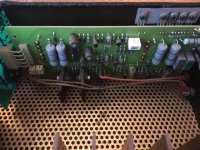 Ampliwire IIa-PCB.jpg104 KB · Views: 148
Ampliwire IIa-PCB.jpg104 KB · Views: 148 -
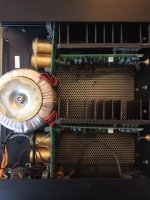 Ampliwire IIa-open-top.jpg82.3 KB · Views: 155
Ampliwire IIa-open-top.jpg82.3 KB · Views: 155 -
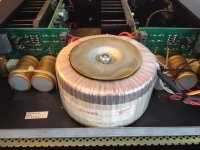 Ampliwire IIa-PS.jpg77.5 KB · Views: 129
Ampliwire IIa-PS.jpg77.5 KB · Views: 129 -
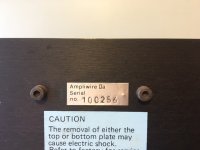 Ampliwire IIa-IV.jpg56.3 KB · Views: 136
Ampliwire IIa-IV.jpg56.3 KB · Views: 136 -
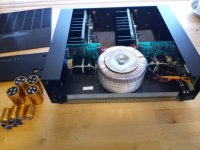 Ampliwire IIa-II.jpg53.6 KB · Views: 139
Ampliwire IIa-II.jpg53.6 KB · Views: 139 -
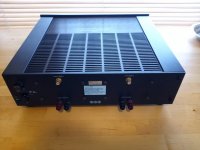 Ampliwire IIa-III.jpg45.1 KB · Views: 117
Ampliwire IIa-III.jpg45.1 KB · Views: 117 -
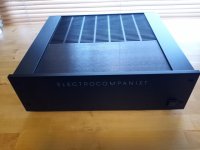 Ampliwire IIa-I.jpg40.7 KB · Views: 134
Ampliwire IIa-I.jpg40.7 KB · Views: 134 -
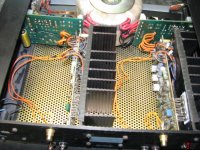 1396055-9396b089-electrocompaniet-ampliwire-ii-power-amplifier.jpg162 KB · Views: 136
1396055-9396b089-electrocompaniet-ampliwire-ii-power-amplifier.jpg162 KB · Views: 136 -
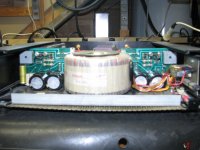 1396054-bd511c11-electrocompaniet-ampliwire-ii-power-amplifier.jpg106.3 KB · Views: 129
1396054-bd511c11-electrocompaniet-ampliwire-ii-power-amplifier.jpg106.3 KB · Views: 129 -
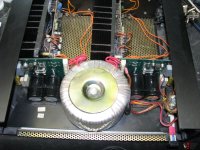 1396051-55292ca7-electrocompaniet-ampliwire-ii-power-amplifier.jpg154.1 KB · Views: 148
1396051-55292ca7-electrocompaniet-ampliwire-ii-power-amplifier.jpg154.1 KB · Views: 148 -
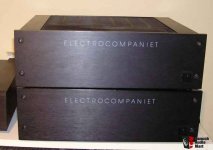 1392495-d3bc8ff7-electrocompaniet-ampliwire-ii-power-amplifier.jpg30.5 KB · Views: 137
1392495-d3bc8ff7-electrocompaniet-ampliwire-ii-power-amplifier.jpg30.5 KB · Views: 137 -
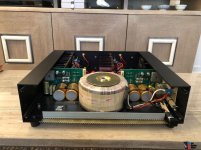 2325095-f6faf2ad-electrocompaniet-ampliwire-ii-amplifier-completely-restored.jpg128.5 KB · Views: 240
2325095-f6faf2ad-electrocompaniet-ampliwire-ii-amplifier-completely-restored.jpg128.5 KB · Views: 240 -
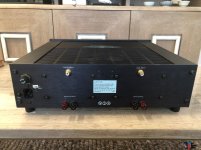 2325096-01b9e9e5-electrocompaniet-ampliwire-ii-amplifier-completely-restored.jpg115.4 KB · Views: 130
2325096-01b9e9e5-electrocompaniet-ampliwire-ii-amplifier-completely-restored.jpg115.4 KB · Views: 130 -
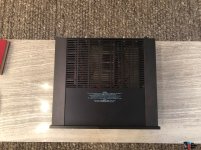 2325097-de6c305e-electrocompaniet-ampliwire-ii-amplifier-completely-restored.jpg152.7 KB · Views: 133
2325097-de6c305e-electrocompaniet-ampliwire-ii-amplifier-completely-restored.jpg152.7 KB · Views: 133 -
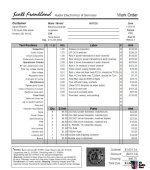 2325098-d73e5587-electrocompaniet-ampliwire-ii-amplifier-completely-restored.jpg99.7 KB · Views: 148
2325098-d73e5587-electrocompaniet-ampliwire-ii-amplifier-completely-restored.jpg99.7 KB · Views: 148 -
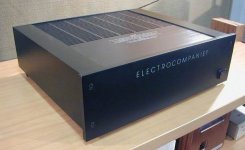 ampliwire 100.jpg34.9 KB · Views: 155
ampliwire 100.jpg34.9 KB · Views: 155
There is a second sticker below those with serial No "8646" (go to the first image of post #1) :Maybe with help of the serial-No 8646 (which is also to find on a second sticker on the bottom plate) and the year of purchase in not used condition it is possible to say from any member, what is the associated model naming. Thank you very much in advance.
I read there this: "13/12 b4" and "12 G"
This may be further important information to be able to say which model in question it is.
Hi,
These amplifier is the Ampliwire IIa, second generation.
The first generation (Ampliwire II) haved the BD911 and BD 912 TO-220 as output transistors, directly soldered to PCB.
The second generation (Ampliwire IIa) haved the 2SA1141 and 2SC2681 TO-247 (much bigger) placed under the PCB and connected with wires to the circuit.
Finally, the third and last generation haved the output transistors soldered directly to the circuit with a newer PCB. The same PCB used in the AW65.
Hope this will help you.
These amplifier is the Ampliwire IIa, second generation.
The first generation (Ampliwire II) haved the BD911 and BD 912 TO-220 as output transistors, directly soldered to PCB.
The second generation (Ampliwire IIa) haved the 2SA1141 and 2SC2681 TO-247 (much bigger) placed under the PCB and connected with wires to the circuit.
Finally, the third and last generation haved the output transistors soldered directly to the circuit with a newer PCB. The same PCB used in the AW65.
Hope this will help you.
good information - thank you very much.Hi,
These amplifier is the Ampliwire IIa, second generation.
The first generation (Ampliwire II) haved the BD911 and BD 912 TO-220 as output transistors, directly soldered to PCB.
The second generation (Ampliwire IIa) haved the 2SA1141 and 2SC2681 TO-247 (much bigger) placed under the PCB and connected with wires to the circuit.
Finally, the third and last generation haved the output transistors soldered directly to the circuit with a newer PCB. The same PCB used in the AW65.
Hope this will help you.
What is interesting is that on the device from images in this post one can clearly see the type designation on both the sticker at the back plate and on the sticker on the bottom, while on the device in question (image No 1 in post #1) one only see the stickers already mentioned without this model information.
I am looking for the schematic of the periphery (inrush current limiter, voltage regulators for front-ends and the speaker protect relay driver etc.).
Maybe one of the member can post it or know, from which other model this is the same.
https://www.diyaudio.com/community/threads/transformer-output-in-phase-and-out-of-phase.387540/
Attachments
-
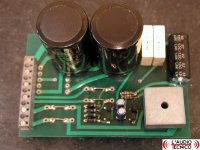 Electrocompaniet_AmpliwireIIa_power.jpg80.7 KB · Views: 108
Electrocompaniet_AmpliwireIIa_power.jpg80.7 KB · Views: 108 -
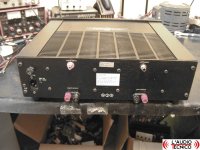 Electrocompaniet_AmpliwireIIa_rear.jpg91.9 KB · Views: 100
Electrocompaniet_AmpliwireIIa_rear.jpg91.9 KB · Views: 100 -
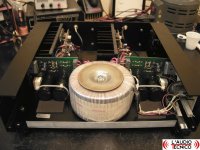 Electrocompaniet_AmpliwireIIa_inside.jpg87.7 KB · Views: 122
Electrocompaniet_AmpliwireIIa_inside.jpg87.7 KB · Views: 122 -
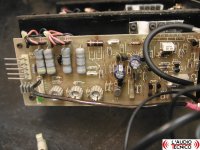 Electrocompaniet_AmpliwireIIa_board.jpg92.9 KB · Views: 103
Electrocompaniet_AmpliwireIIa_board.jpg92.9 KB · Views: 103 -
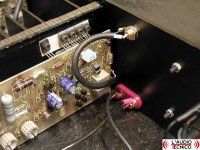 Electrocompaniet_AmpliwireIIa_connections.jpg98.9 KB · Views: 104
Electrocompaniet_AmpliwireIIa_connections.jpg98.9 KB · Views: 104 -
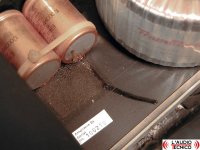 Electrocompaniet_AmpliwireIIa_acyd.jpg89.6 KB · Views: 104
Electrocompaniet_AmpliwireIIa_acyd.jpg89.6 KB · Views: 104 -
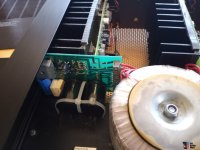 4393320-7259e8b2-electrocompaniet-ampliwire-iia-refurbished.jpg89.3 KB · Views: 104
4393320-7259e8b2-electrocompaniet-ampliwire-iia-refurbished.jpg89.3 KB · Views: 104
Last edited:
Hi,
Yes, before 1983-1984, Electrocompaniet did not have a serious sticker for the serial number and model number. Only latest Ampliwire IIa have a more robust ones and beyond. I personally have six of these babies and only two of them have serial number, none on the others.
Actually, I am in the process of completely rebuilding them with new PCB circuit, new PSU and soft start. All of those enhancement make a lot of difference in the sound. All the qualities without all the default.
Is it your amplifier in the pictures that you've send in your latest post?
Yes, before 1983-1984, Electrocompaniet did not have a serious sticker for the serial number and model number. Only latest Ampliwire IIa have a more robust ones and beyond. I personally have six of these babies and only two of them have serial number, none on the others.
Actually, I am in the process of completely rebuilding them with new PCB circuit, new PSU and soft start. All of those enhancement make a lot of difference in the sound. All the qualities without all the default.
Is it your amplifier in the pictures that you've send in your latest post?
No, but this pictures show identical power amp PCB's. Pictures from my amplifier (actually from a friend) are to find in the first three images from post #1.
If you realize a new PCB circuit, the URL under
https://www.renardson-audio.com
and
https://linearaudio.net/sites/linearaudio.net/files/renardson new class B.pdf
provide some helpful hints.
If one use only the inverted power amp section with signal input on R18 - 390 ohms (= input resistance), i. e. without the previous transconductance amplifier the sonic quality is much more better than with this transconductance amplifier (most easy modification step)
The low input resistance of 390 ohms is only an issue, if you use a preamplifier with tubes and high output impedance.
In general medium input impedance is rather an advantage, because the influence to the sound quality through cable character of RCA signal cables is considerably lower.
P.S.: until this day I haven't understand, why this additional transconductance amplifier in serial connection should provide advantages resp. improvements in sound quality.
If you realize a new PCB circuit, the URL under
https://www.renardson-audio.com
and
https://linearaudio.net/sites/linearaudio.net/files/renardson new class B.pdf
provide some helpful hints.
If one use only the inverted power amp section with signal input on R18 - 390 ohms (= input resistance), i. e. without the previous transconductance amplifier the sonic quality is much more better than with this transconductance amplifier (most easy modification step)
The low input resistance of 390 ohms is only an issue, if you use a preamplifier with tubes and high output impedance.
In general medium input impedance is rather an advantage, because the influence to the sound quality through cable character of RCA signal cables is considerably lower.
P.S.: until this day I haven't understand, why this additional transconductance amplifier in serial connection should provide advantages resp. improvements in sound quality.
Last edited:
Hi,
Thanks for the URL, I apreciate but my PCB are already built, but for others projects, who knows.
If I look at your amplifier (picture number 3), I saw a lot of capacitor added to the main board. Could you explain to me those modifications ?
Also I note that the MPQ2484 was replaced with four single transistor. I hope that you have match them. And what is the value of the bias you are using ?
Thanks for the URL, I apreciate but my PCB are already built, but for others projects, who knows.
If I look at your amplifier (picture number 3), I saw a lot of capacitor added to the main board. Could you explain to me those modifications ?
Also I note that the MPQ2484 was replaced with four single transistor. I hope that you have match them. And what is the value of the bias you are using ?
Wonderfull wonderfull stuf those EC. Best sound Ive heard was a few years newer fronted by Oracle Delphi and drivinf Cerwin Vega AT-40!!! Might just buy a set of VC-40 up for 90 dollars amp included. Those are supposed to be even better.
Cheers!
Cheers!
This modification was from me - unfortunately 20 years ago. Probably additional caps for the reference currents (for the associated current sources).Hi,
Thanks for the URL, I apreciate but my PCB are already built, but for others projects, who knows.
If I look at your amplifier (picture number 3), I saw a lot of capacitor added to the main board. Could you explain to me those modifications ?
Also I note that the MPQ2484 was replaced with four single transistor. I hope that you have match them. And what is the value of the bias you are using ?
The old genuine documentation incl. two schematic variantes from Electrocompaniet (ordered in 1985) I don't find currently - there I have all details explain.
Which model did you have in mind please when you said this?Very wonderfull Indeed. And much better in Mono Bloc Mode. Simply stunning.
- Home
- Amplifiers
- Solid State
- Unknown EC (Electrocompaniet) Model from AW (Ampliwire) Series